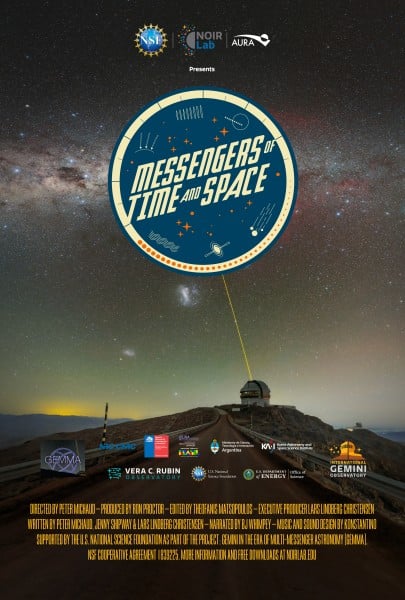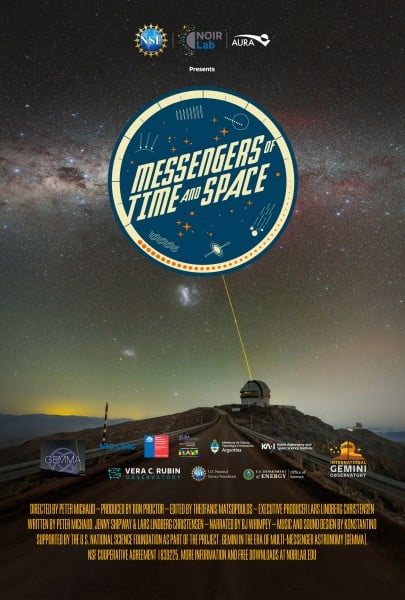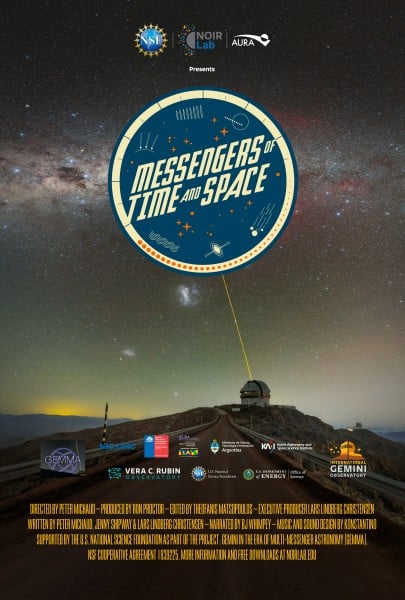-
Scientists spot high-speed galaxy collision 11 billion light-years away: ‘We hence call this system the cosmic joust’

Using a telescope in Chile, astronomers have captured a high-speed collision between two galaxies located more than 11 billion light-years away, getting a rare direct glimpse into how the universe’s most luminous sources of energy, known as quasars, can sculpt their surroundings and influence the evolution of galaxies. The new findings describe a galactic battle…
-
When lightning bolts collide, do they unleash powerful gamma-ray flashes?

The most powerful explosions in the known universe come from what are known as gamma-ray bursts — though they may not sound particularly exciting, scientists usually speak about these incredible blasts of electromagnetic radiation in the same breath as giant collapsing stars and black holes. We’ve catalogued quite a few of these events since the…
-
New Studies Dismiss Signs of Life on Distant Planet

In April, a team of astronomers announced that they might — just might — have found signs of life on a planet over 120 light-years from Earth. The mere possibility of extraterrestrial life was enough to attract attention worldwide. It also attracted intense scrutiny from other astronomers. Over the past month, researchers have independently analyzed…
-
Trippy supercomputer simulation offers unprecedented view of the space between stars

If you’ve ever poured milk into a cup of coffee and watched it swirl, you’ve seen turbulence in action. This phenomenon is responsible for everything from a bumpy airplane trip to ocean currents. Now, researchers have developed a way to visualize in unprecedented detail the turbulence within the interstellar medium — the clouds of gas…
-
Scientists find rare double-star system where one star orbited inside the other

Astronomers may have discovered a rare type of binary star system, where one star used to orbit inside its partner. In the new study, astronomers investigated a pulsar known as PSR J1928+1815 located about 455 light-years from Earth. A pulsar is a kind of neutron star, a corpse of a large star that perished in…
-
NSF NOIRLab Presents Messengers of Time and Space Planetarium Show
Newswise — Today, NSF NOIRLab, funded by the U.S. National Science Foundation (NSF), has released the fulldome planetarium show, Messengers of Time and Space. This free-to-download production brings the combination of the International Gemini Observatory, funded in part by NSF and operated by NSF NOIRLab, and NSF–DOE Vera C. Rubin Observatory, funded by NSF and the U.S. Department of Energy’s…
-
NSF NOIRLab Presents Messengers of Time and Space Planetarium Show
Newswise — Today, NSF NOIRLab, funded by the U.S. National Science Foundation (NSF), has released the fulldome planetarium show, Messengers of Time and Space. This free-to-download production brings the combination of the International Gemini Observatory, funded in part by NSF and operated by NSF NOIRLab, and NSF–DOE Vera C. Rubin Observatory, funded by NSF and the U.S. Department of Energy’s…
-
NSF NOIRLab Presents Messengers of Time and Space Planetarium Show
Newswise — Today, NSF NOIRLab, funded by the U.S. National Science Foundation (NSF), has released the fulldome planetarium show, Messengers of Time and Space. This free-to-download production brings the combination of the International Gemini Observatory, funded in part by NSF and operated by NSF NOIRLab, and NSF–DOE Vera C. Rubin Observatory, funded by NSF and the U.S. Department of Energy’s…
-
From near to far, from here to there, Hubble sees galaxies everywhere | Space photo of the day for May 22, 2025

This Hubble Space Telescope image features a remote galaxy, called HerS 020941.1+001557, which appears as a red arc that partially encircles the foreground elliptical galaxy SDSS J020941.27+001558.4. (Image credit: ESA/Hubble & NASA, H. Nayyeri, L. Marchetti, J. Lowenthal) The red arc at the center of this Hubble Space Telescope image is a distant galaxy, called…
-
No, solar storms didn’t crash Spain’s internet — but here’s what they can do

On May 20, just weeks after power outages swept across the Iberian Peninsula, mobile networks in parts of Spain began to falter. All too swiftly, the sun was cast as the possible villain. A flurry of social media posts blamed solar activity for these outages, as space weather can interfere with technology, but only in…


